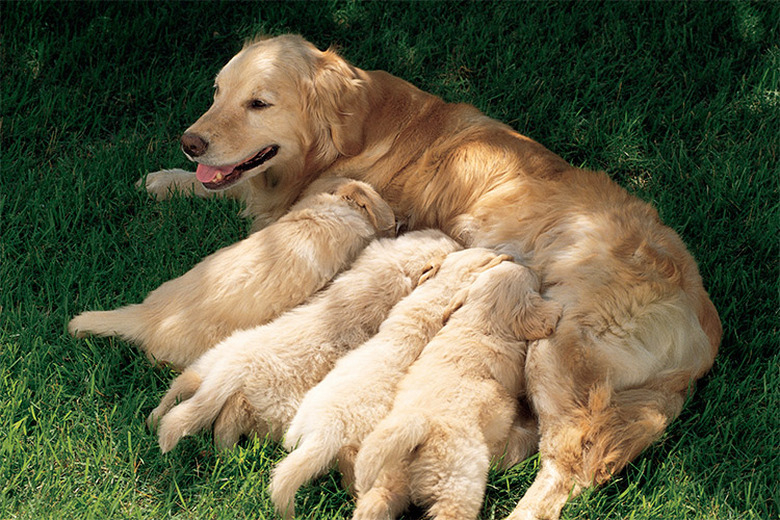How To Assist A Mother Dog That's Giving Birth
You love your dog and you never want to see her in pain. You might feel helpless while watching your pup give birth to her litter, wanting to jump in and help as much as possible. Keep in mind that birth is a natural process for animals, and your mama dog knows what she's supposed to do. You can help by providing a safe environment and monitoring and caring for her to ensure there are no complications.
Prepare
Help your mother dog prepare for birth by providing her with a warm, safe and quiet location to have her puppies. Your pup may select her own place, which you should attempt to accommodate by clearing away distractions and providing absorbent bedding. Keep a close watch on her as she approaches her due date, ensuring she gets adequate rest and nutrition. Be loving and supportive, but also recognize she may be preoccupied with nesting.
Monitor
Once your mother dog starts to have contractions, she will typically deliver her first pup within the hour and have one pup every 30 to 60 minutes until she's fully delivered. As each cup is born, she will break its individual membrane and sever the umbilical cord with her teeth. If she doesn't perform these functions, tie off the cord with dental floss or clean thread and sever the cord about an inch from the pup's abdomen, coating the ends of the cord with iodine. Suction the pup's mouth and towel it vigorously to stimulate respiration. Place the pup close to the mother's body for warmth and nursing. Even if the pups don't nurse right away, they should be kept close to the mother's body for warmth and comfort or moved to a warm area, like an open, towel-lined styrofoam cooler.
Limit Physical Help
Don't attempt to help with the delivery process by pulling a pup from the birth canal. It's natural for pups to be born breech, and unless the mother dog becomes feverish or experiences labored breathing, don't intervene. If you have concerns, contact your vet. Anticipate the mother expelling placentas during the delivery process and count the number to ensure there is one for each pup.
Support
Talk to your mother dog in gentle and comforting tones during the birth process, but keep a distance if she seems agitated. Offer her water or a treat like vanilla ice cream, which will give her a boost of energy. Keep the birthing area clean by replacing soiled towels and bedding as necessary and cleaning away placenta and afterbirth. The mother may attempt to eat the placenta — this is a normal act, but not one that is necessary to her health.
Care
Your mother dog will be exhausted by the time her litter has completely arrived, but this is when her babies will require her full attention. Help your pup become an attentive mother by taking care of her with nutrition and hydration. If for any reason your mother dog is feverish or listless, or if the puppies are not nursing, contact your vet for assistance.
By Lisa McQuerrey
References
University of Minnesota College of Veterinary Medicine: Whelping
UC Davis: Normal Whelping in the Bitch
About the Author
Lisa McQuerrey has been a business writer since 1987. In 1994, she launched a full-service marketing and communications firm. McQuerrey's work has garnered awards from the U.S. Small Business Administration, the International Association of Business Communicators and the Associated Press. She is also the author of several nonfiction trade publications, and, in 2012, had her first young-adult novel published by Glass Page Books.
Always check with your veterinarian before changing your pet's diet, medication, or physical activity routines. This information is not a substitute for a vet's opinion.
